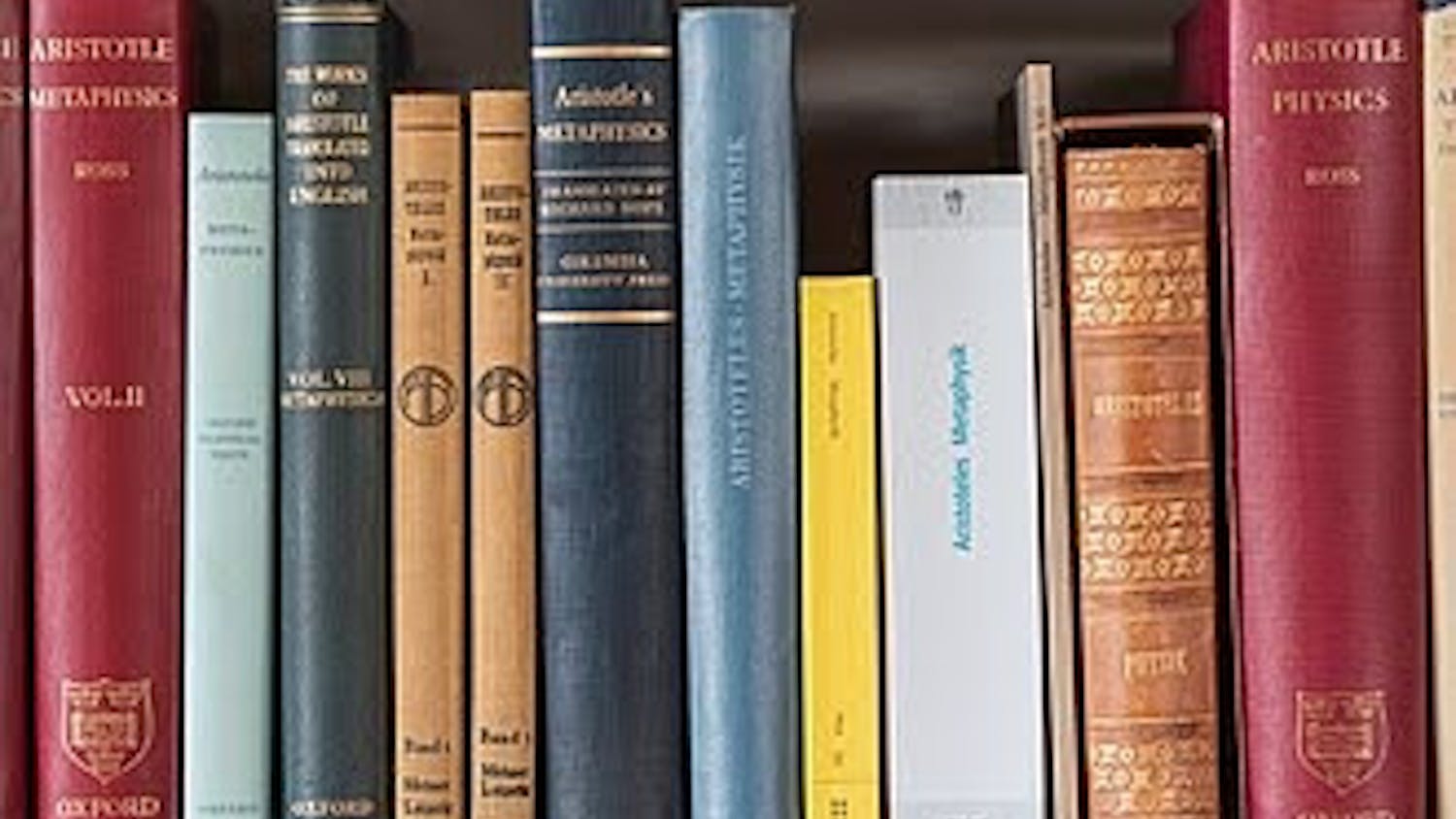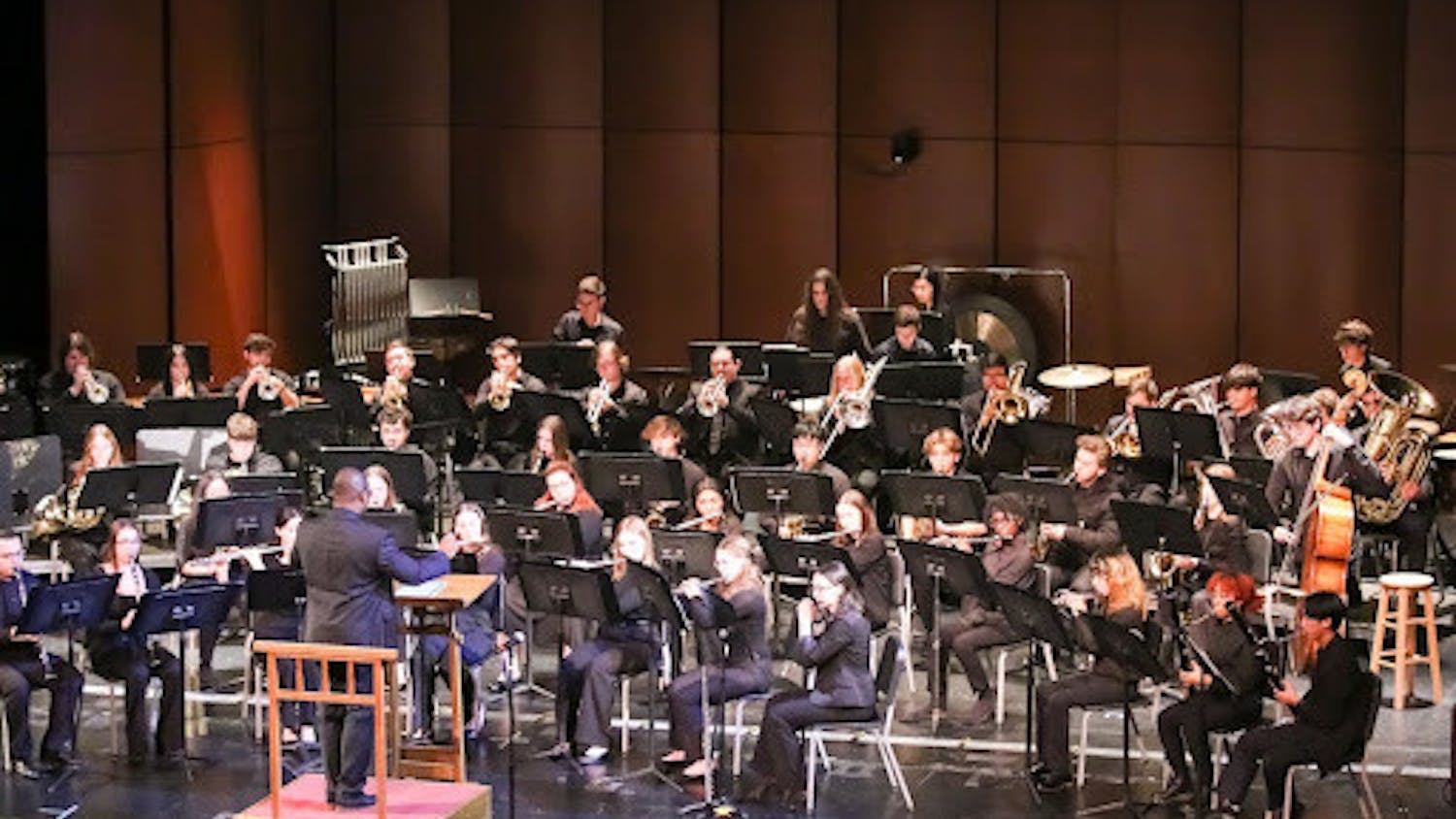The orchestra filled the Kendall Hall main stage auditorium with the brilliant sounds of strings, brass, woodwinds, percussion and . the accordion?
On Nov. 18, the College's orchestra held its biannual concert and played five pieces, including the Concerto for Accordion & Orchestra, which featured Robert Young McMahan, professor of music, on the accordion.
The concerto, composed by Paul Creston, had the unusual combination of an accordion with the typical instruments of an orchestra.
This piece defied the stereotypical view of the accordion: It certainly didn't sound like the instrument that's played to set the mood at a French restaurant. In the third movement in particular, McMahan's hands flew across the keyboard of the accordion to keep up with the lively tempo of the piece.
The piece had extra significance because Carmen Carrozza, who premiered the concerto with the Boston Pops Orchestra in 1960, was in attendance.
While the night was certainly remembered for the accordion performance, the second half of the evening had a distinctive Spanish flavor. After playing the composition "Danza del Trigo" by Alberto Ginastera, the concert concluded with Scenes and Dances from "The Three Cornered Hat" by Manuel de Falla.
In the first movement, senior music major Melissa Gonzalez performed a soprano vocal solo as the orchestra clapped and chanted "Ol?!" The remaining four movements provided a nice variation in mood until the energetic ending to close the concert.
The audience was noticeably impressed with the performance, giving the performers standing ovations both before intermission and at the end of the night.
Philip Tate, professor of music and the conductor of the orchestra, was proud of the performers, which included students (music and non-music majors) and a few alumni.
"The students did excellent," Tate said. "The music was very challenging, especially the accordion concerto, but (the students) always rise to the occasion."
Greg Marsh, senior music education major and principal clarinetist in the orchestra, agreed with Tate's sentiments.
"It seems that with each performance, the orchestra brings the music to a whole new level," he said.
According to Marsh, the accordion concerto was especially taxing because it took intense concentration to keep up with the music.
"In the last movement, if you took your eyes off of the music for one second, that's all it took for you to lose your place," he said.
Tate said that he especially enjoyed the accordion concerto and "Scherzo in D Minor," a short piece written by Edouard Lalo. Designed to create a feeling of tension, the composition is made up of a calm middle section surrounded by a more agitated melody.
The evening began with "Finlandia," a majestic anthem-like tune, by Jean Sibelius.
After the show, McMahan praised Tate and the orchestra for doing so well with such an unusual piece as the accordion concerto.
"It is rarely done," he said. "Dr. Tate was very brave to take on this piece."
However, McMahan made sure to emphasize that there are hundreds of classical works that include the accordion, virtually all of which were composed after World War II. He said that the accordion is a relatively new instrument, having first been used in the 1820s.
McMahan, who serves as an officer for the American Accordionists' Association, is the coordinator of theoretical studies and composition at the College and is responsible for the creation of the accordion major.
When asked about the typical audience response to a classical piece featuring the accordion, McMahan said that the reaction is always the same:
"Gee whiz, I didn't know it could do that!"






